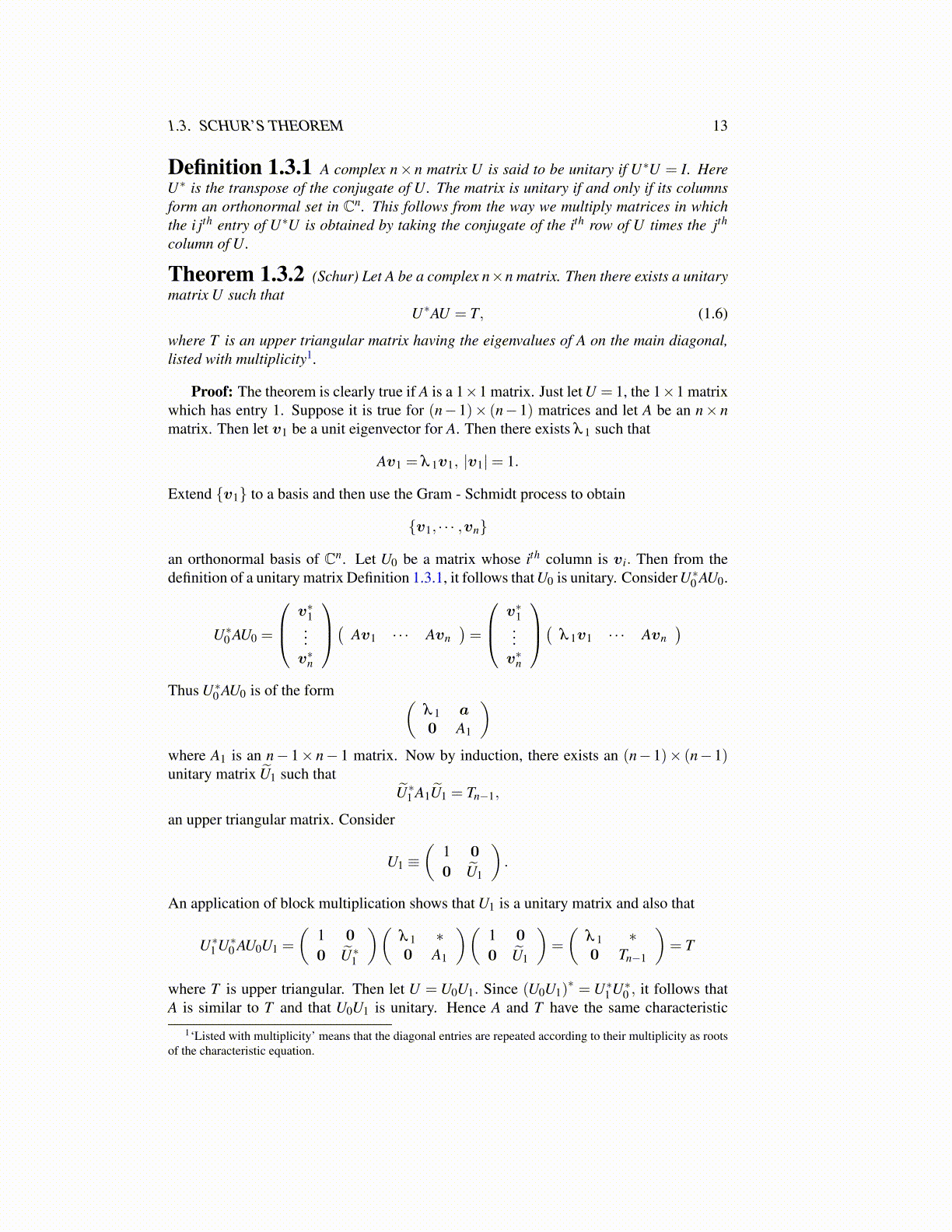
1.3. SCHUR’S THEOREM 13
Definition 1.3.1 A complex n× n matrix U is said to be unitary if U∗U = I. HereU∗ is the transpose of the conjugate of U. The matrix is unitary if and only if its columnsform an orthonormal set in Cn. This follows from the way we multiply matrices in whichthe i jth entry of U∗U is obtained by taking the conjugate of the ith row of U times the jth
column of U.
Theorem 1.3.2 (Schur) Let A be a complex n×n matrix. Then there exists a unitarymatrix U such that
U∗AU = T, (1.6)
where T is an upper triangular matrix having the eigenvalues of A on the main diagonal,listed with multiplicity1.
Proof: The theorem is clearly true if A is a 1×1 matrix. Just let U = 1, the 1×1 matrixwhich has entry 1. Suppose it is true for (n−1)× (n−1) matrices and let A be an n× nmatrix. Then let v1 be a unit eigenvector for A. Then there exists λ 1 such that
Av1 = λ 1v1, |v1|= 1.
Extend {v1} to a basis and then use the Gram - Schmidt process to obtain
{v1, · · · ,vn}
an orthonormal basis of Cn. Let U0 be a matrix whose ith column is vi. Then from thedefinition of a unitary matrix Definition 1.3.1, it follows that U0 is unitary. Consider U∗0 AU0.
U∗0 AU0 =
v∗1...v∗n
( Av1 · · · Avn)=
v∗1...v∗n
( λ 1v1 · · · Avn)
Thus U∗0 AU0 is of the form (λ 1 a0 A1
)where A1 is an n− 1× n− 1 matrix. Now by induction, there exists an (n−1)× (n−1)unitary matrix Ũ1 such that
Ũ∗1 A1Ũ1 = Tn−1,
an upper triangular matrix. Consider
U1 ≡(
1 0
0 Ũ1
).
An application of block multiplication shows that U1 is a unitary matrix and also that
U∗1 U∗0 AU0U1 =
(1 0
0 Ũ∗1
)(λ 1 ∗0 A1
)(1 0
0 Ũ1
)=
(λ 1 ∗0 Tn−1
)= T
where T is upper triangular. Then let U = U0U1. Since (U0U1)∗ = U∗1 U∗0 , it follows that
A is similar to T and that U0U1 is unitary. Hence A and T have the same characteristic1‘Listed with multiplicity’ means that the diagonal entries are repeated according to their multiplicity as roots
of the characteristic equation.